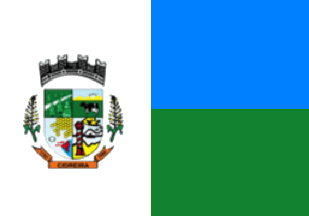 image by Ivan Sache,
14 July 2020
image by Ivan Sache,
14 July 2020
Last modified: 2020-07-14 by ian macdonald
Keywords: rio grande do sul | cidreira |
Links: FOTW homepage |
search |
disclaimer and copyright |
write us |
mirrors
 image by Ivan Sache,
14 July 2020
image by Ivan Sache,
14 July 2020
The municipality of Cidreira (12,668 inhabitants; 24,636 ha) is located 100
km east of Porto Alegre.
Cidreira originates in a domain granted in 1767
to Almoxarife-Mor Manuel Prereira Franco. Covering 4.5 leagues and having 2.5
leagues of seashore, the domain was composed of the fazendas of Cidreira,
Rondinha, Roca Velha, Ponta do Mato and Porteira. Following tax evasion by its
owner, the domain was subsequently confiscated by the crown and sold by auction;
in 1819, Luiz José Ferreira Saraiva acquired the domain and would bequeath its
northern part, composed of Roca Velha, Rondinha and Cidreira, to his son,
Francisco Pereira Saraiva.
Summer residences, at the time straw-roofed huts
with compacted sand floor, were initiated in Cidreira after 1860. The first
permanent inhabitant was João Neves, who was commissioned by the government to
prevent the building of huts without permission.
The first wooden buildings
(huts, the church and hotels) appeared in the 1930s. The building of the road
connecting Porto Alegre to the seashore, completed in 1958, initiated the
urbanization of Cidreira.
The municipality of Cidreira was established by
State Law No. 8,606 promulgated on 9 May 1988, separating from Tramandaí and
Palmares do Sul, and inaugurated on 1 January 1989.
https://www.cidreira.rs.gov.br/
Municipal website
Ivan Sache, 14 July 2020
The flag and arms of Cidreira are prescribed by Municipal Law No.40 promulgated
on 25 August 1989.
Article 1.
I. The flag, in dimensions 1.60 m in
length on 1.10 m in width, is divided in three stripes: one vertical stripe,
vertical, dexter, of 55 cm in length, covering the flag's whole width, and two
horizontal stripes each of 1.05 m in length, the upper blue and the lower green,
with the following meaning:
a) White represents the social element, peace,
and the geographical element, the coastal dunes;
b) Blue represents the sky
and the sea;
c) Green represents the native forests and reforestation.
II. The municipal coat of arms, placed dexter on the flag, in the center of
the vertical white stripe, is composed of a crown with four Portuguese towers, a
quartered shield surrounded by two rice plants, and, beneath, a scroll inscribed
in the center with the municipality's name and on the sides with years "1726"
and "1988", respectively, with the following meaning:
1) The crown, composed
of four stylized Portuguese towers, argent, represents civil engineering, the
municipality's main source of income and the four districts composing the
municipality;
2) The Portuguese shield is quartered as follows:
a) in the
upper left part, a street lined with Brazilian pines, representing the regional
and urban infrastructure and reforestation.
b) in the upper right part, a
representation of agriculture, in harmony with the natural environment;
c) in
the lower right part, a representation of the resource supplied by bee-keeping,
fishing and the natural resources;
d) in the lower right part, a
representation of the tourism and nature components: the lighthouse, the sea and
the dunes.
3) On the shield's sides, two rice plants symbolizing the
municipality's agricultural resources;
4) Beneath the shield on a scroll
salmon in black the municipality's name surrounded by dunes and "1726", the
first historical date, and "1988", the year of original emancipation by Law No.
8,606 promulgated on 9 May 1988.
The coat of arms shall be inscribed in a
rectangle of 57 cm in width on 42 cm in length, located in the center of the
vertical white stripe, on the flag's dexter part.
https://leismunicipais.com.br/a/rs/c/cidreira/lei-ordinaria/1989/4/40/lei-ordinaria-n-40-1989-cria-no-municipio-de-cidreira-a-bandeira-e-o-brasao-municipais
Leis Municipais database
Photos
https://www.facebook.com/cidreirarsoficial/
https://www.facebook.com/cidreirarsoficial/
https://www.facebook.com/cidreirarsoficial/
The explanation of the
mural crown is fanciful, since Cidreira never had four districts. At the time of
adoption of symbols, the municipality was composed of a single district (seat).
The district of Pinhal was established by Municipal Law No. 112 promulgated on
14 November 1990, to be suppressed by Municipal Law No. 10,670 promulgated on 28
December 1995, which transformed it into the municipality of Balneário Pinhal.
Accordingly, Cidreira remained composed of two districts, the seat and Costa do
Sol, established by Municipal Law No. 318 promulgated on 22 March 1993.
https://cidades.ibge.gov.br/brasil/rs/cidreira/historico
IBGE
The
Cidreira dune field covers an area of c. 30 km2, from the town of Cidreira in
the south to the sea resort of Tramandaí in the north. It is composed of
barchans - crescent-shaped, transgressive dunes -, forming continuous dune
chains up to 3 km in length. The average height of the dunes is 8 to 10 m, some
of them peaking to 20 or 25 m. The main dune field is separated from the
adjacent beach by a strip of dunes colonized by plants. Breaks in the strip
allows sand from the beach to be carried by wind and "feed" the dune field.
Field monitoring yielded a dune migration speed of 20 to 30 m/year.
https://seer.ufrgs.br/PesquisasemGeociencias/article/view/17936
L.J.
Tomazelli, S. Rebello Dillenburg, E. Guimarães Barboza, M.L. Correa da Camara
Rosa. 2008. Geomorfologia e potencial de preservação dos campos de dunas
transgressivos de Cidreira e Itapeva, litoral norte do Rio Grande do Sul, Brasil.
Pesquisas em Geociências 35, 47-55.
Ivan Sache,
14 July 2020